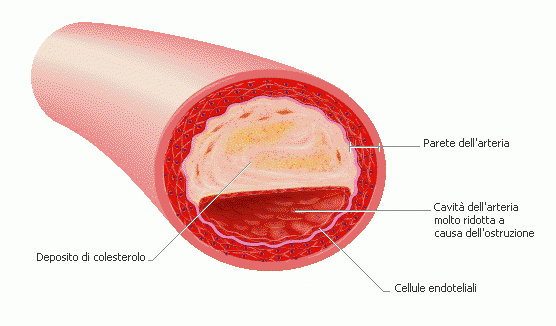SPECIAL CHOLESTEROL. WHAT TO DO WHEN IT IS HIGH
The products recommended by Antiaging Club

Definition and curiosity
Cholesterol is a steroid, a lipid molecule that is composed of four rings policicloalifatici (condensed together in formation trans) and an aliphatic tail, in addition to any functional groups. The polycyclic structure base takes the name of Ciclopentanoperidrofenantrene.
The word comes from the greek chole cholesterol (bile) and stereos (solid), and has been used for the first time in 1894. It is white in color and has a consistency similar to that of wax. His presence had already been found in the calculations of the gallbladder in 1784, but in 1975 the Nobel Prize John W. Cornforth has specified the spatial orientation of the hydrogen atoms on the molecule. Cholesterol is essential for animal life. Plants contain cholesterol only slight traces and other lipid substances structurally similar (fitosterine or phytosterols).
The man produces for biosynthesis autonomous most of the cholesterol requires, in adults between 1 and 2 grams per day. Only a small part (on average 0.1 to 0.3, maximum 0.5 grams) is taken with the power supply: the majority of cholesterol metabolism occurs in the liver. The content of cholesterol in the human body is about 150 grams.
Types of Cholesterol
The total cholesterol is divided into cholesterol VLDL (very low density), LDL (low density) and HDL (high
 density).
density).The low-density lipoprotein (LDL) convey between 60% and 80% of serum cholesterol. Presenting a lot of affinity with the endothelial cells of the arteries, cholesterol free on the vessel wall (is the atheromatous plaque in atherosclerosis), and conversely the high-density lipoprotein (HDL) have the opposite function, removing cholesterol from the arteries and returning it the liver. Uncertain is instead the meaning of cholesterol present in VLDL lipoproteins.
LDL is commonly referred to as bad cholesterol, HDL as good cholesterol.
Cardiovascular risk
Cardiovascular risk is the theoretical probability of suffering a disease related to atherosclerosis, such as angina pectoris, myocardial infarction, stroke or intermittent claudication. These diseases, collectively, constitute the leading cause of death in our country and the rest of the industrialized world.
Recommendations of the World Health Organization (WHO), for some years in the analysis of cholesterol stands out:
- total cholesterol, which must be less than 200
- ratio of total cholesterol / HDL, not exceeding 5 for men and 4.5 for women
In particular, it is necessary to evaluate the cardiovascular risk index: the ratio of total cholesterol to good HDL, the index for a healthy person should be less than 5 for men and 4.5 for women. A person with total cholesterol to good cholesterol to 250 and 85 has a risk index to 2.94 and is in a much better condition than those with total cholesterol of 200 and a good one to 40, where the risk index is 5 .
It is important to understand that the value of total cholesterol is less important and what matters most is the risk index!
In each subject the LDL-HDL mechanism should ensure that the arteries remain clean.
In the assessment of cardiovascular risk count, in addition to cholesterol, other risk factors such as smoking, hypertension, obesity, a sedentary lifestyle. The plaque formation starts in fact with an inflammatory process on the inner wall of the arteries (endothelium), which attracts lymphocytes, which in turn fix cholesterol, calcium and other substances and form plaque.
How to lower the index of cardiovascular risk
The first and fundamental corrective approach to lower the risk index is hygienic diet. For this reason, the adoption of a healthy and balanced diet, together with abstention from smoking and the practice of regular physical activity should be considered essential.
Supplements and drugs to lower cholesterol, should not replace, but associated, to a way of life appropriate. In this way, in fact, you can take advantage of the synergistic action of the two interventions.
The products recommended by Antiaging Club
